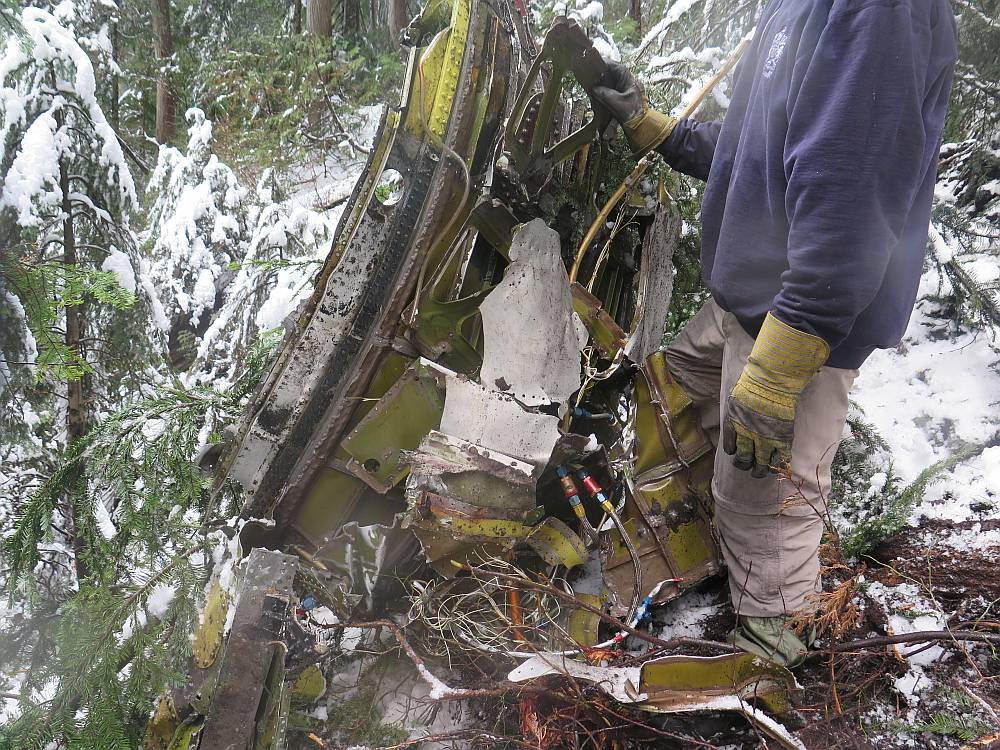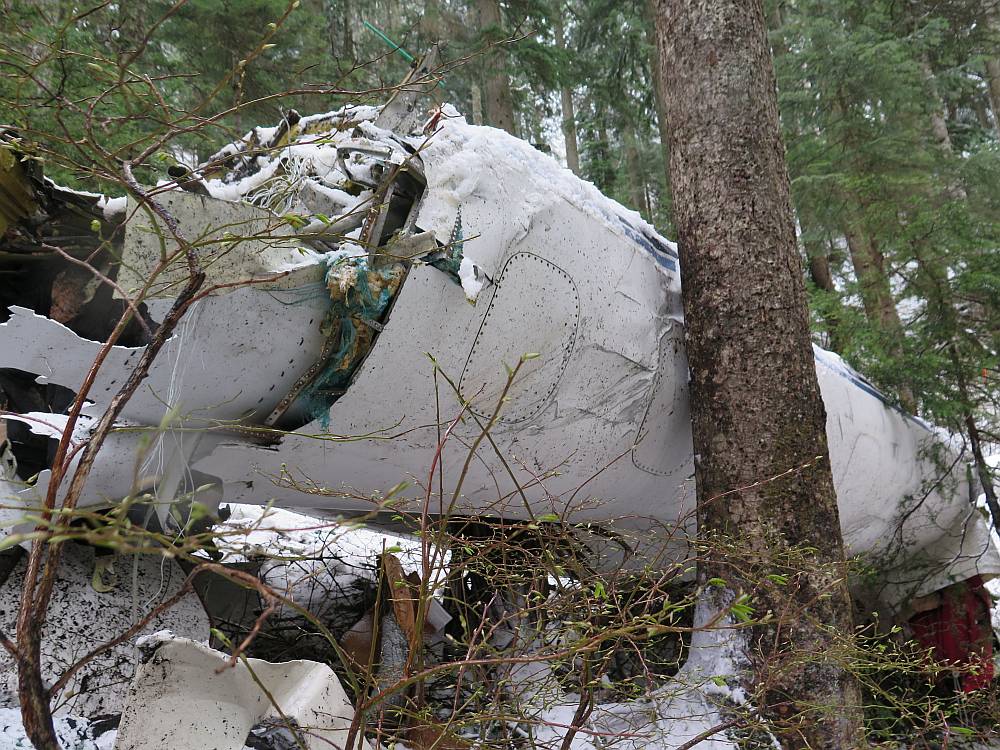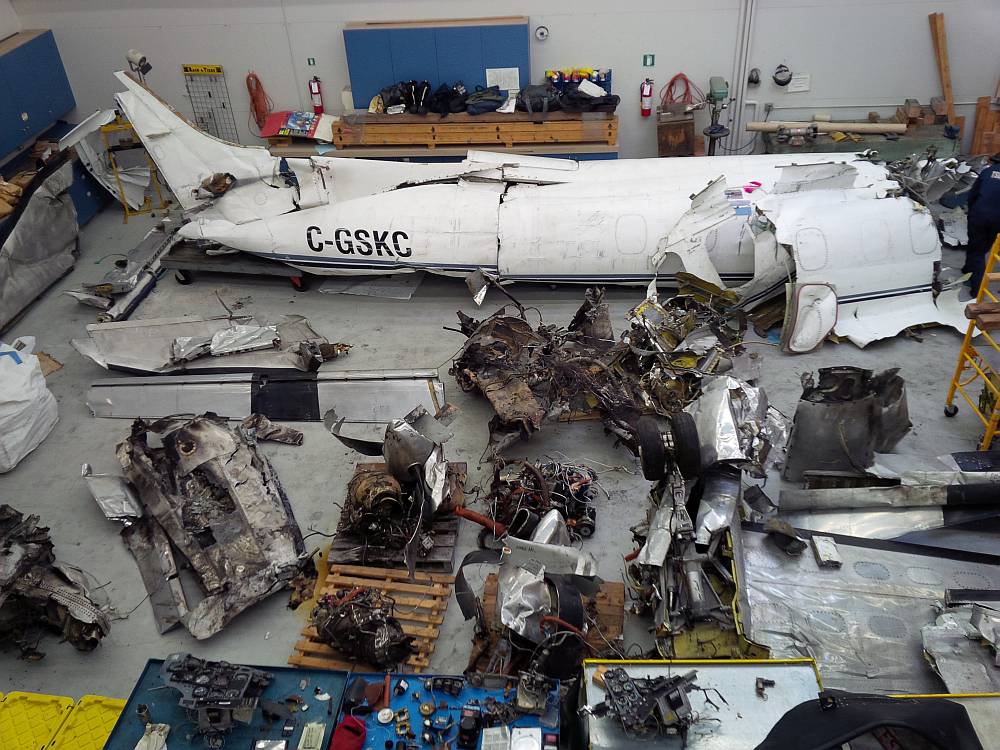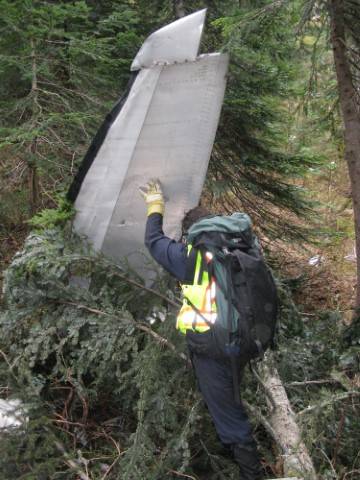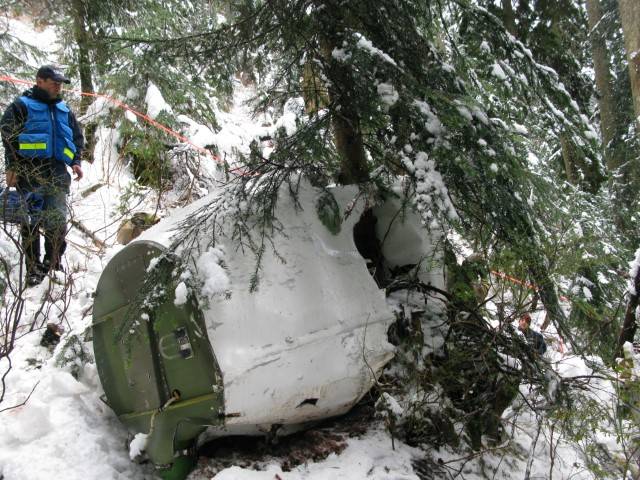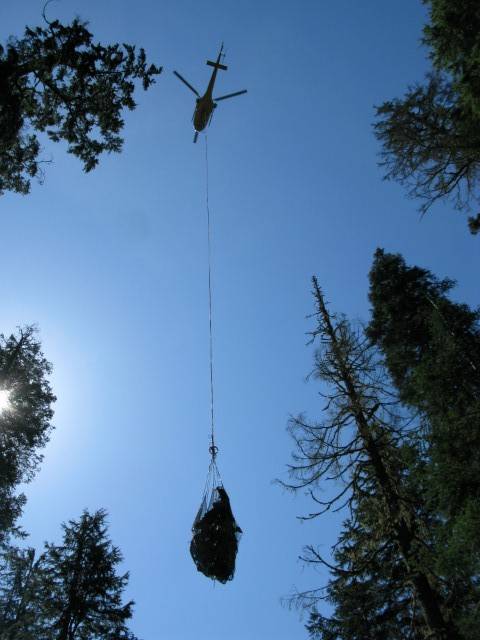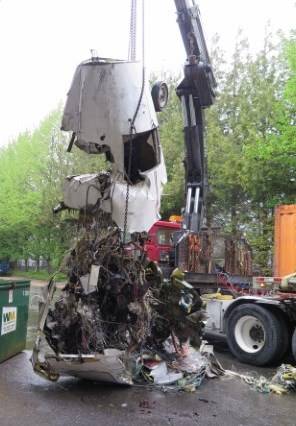In-flight breakup
Carson Air Ltd.
Swearingen SA226-TC Metro II, C-GSKC
North Vancouver, British Columbia
The occurrence
On 13 April 2015, Carson Air Ltd. flight 66 (CA66), a Swearingen SA226-TC Metro II (registration C-GSKC, serial number TC-235), departed Vancouver International Airport (CYVR), British Columbia, with 2 pilots on board for an instrument flight rules flight to Prince George, British Columbia. At 0709 Pacific Daylight Time (PDT), approximately 6 minutes after leaving Vancouver, the aircraft disappeared from air traffic control radar while climbing through an altitude of 8700 feet above sea level in instrument meteorological conditions, about 4 nautical miles north of the built-up area of North Vancouver. Deteriorating weather conditions with low cloud and heavy snowfall hampered an air search; however, aircraft wreckage was found on steep, mountainous, snow-covered terrain by ground searchers at approximately 1645 PDT. The aircraft had experienced a catastrophic in-flight breakup. Both pilots were fatally injured, and the aircraft was destroyed. Although the aircraft's 406-megahertz emergency locator transmitter activated, the antenna was damaged and no signal was received by the Cospas Sarsat (international satellite system for search and rescue). The accident occurred during daylight hours.
Safety communications
TSB Recommendation A17-02:the Department of Transport, in collaboration with the Canadian aviation industry and employee representatives, develop and implement requirements for a comprehensive substance abuse program, including drug and alcohol testing, to reduce the risk of impairment of persons while engaged in safety sensitive functions. These requirements should consider and balance the need to incorporate human rights principles in the Canadian Human Rights Act with the responsibility to protect public safety.
Media materials
News releases
TSB recommends substance abuse program following fatal 2015 in-flight breakup north of Vancouver, British Columbia
Read the news release
Backgrounders
Speeches
News conference for the release of Aviation Investigation Report A15P0081 (Carson Air) Opening remarks
Kathy Fox, TSB Chair
Jason Kobi, TSB Investigator-in-Charge
Deployment notice
TSB deploys team to aircraft accident in British Columbia's North Shore Mountains near Vancouver
Richmond, British Columbia, 14 April 2015 - The Transportation Safety Board of Canada (TSB) is deploying a team to an accident involving a Carson Air aircraft that occurred in British Columbia's North Shore Mountains near Vancouver. The TSB will gather information and assess the occurrence.
Investigation information
Download high-resolution photos from the TSB Flickr page.
Class of investigation
This is a class 2 investigation. These investigations are complex and involve several safety issues requiring in-depth analysis. Class 2 investigations, which frequently result in recommendations, are generally completed within 600 days. For more information, see the Policy on Occurrence Classification.
TSB investigation process
There are 3 phases to a TSB investigation
- Field phase: a team of investigators examines the occurrence site and wreckage, interviews witnesses and collects pertinent information.
- Examination and analysis phase: the TSB reviews pertinent records, tests components of the wreckage in the lab, determines the sequence of events and identifies safety deficiencies. When safety deficiencies are suspected or confirmed, the TSB advises the appropriate authority without waiting until publication of the final report.
- Report phase: a confidential draft report is approved by the Board and sent to persons and corporations who are directly concerned by the report. They then have the opportunity to dispute or correct information they believe to be incorrect. The Board considers all representations before approving the final report, which is subsequently released to the public.
For more information, see our Investigation process page.
The TSB is an independent agency that investigates air, marine, pipeline, and rail transportation occurrences. Its sole aim is the advancement of transportation safety. It is not the function of the Board to assign fault or determine civil or criminal liability.
